This is part three of the Dec. 2 post. Part 1 was dedicated to the Egyptian Museum, part 2 to the pyramids and Great Sphinx of Giza and the Nile River dinner cruise. This post contains information about our visits to Saqqara and Memphis on Dec. 1.
Saqqara contains the oldest complete stone building complex known in history, the Pyramid of Djoser, built early in the Third Dynasty, during the reign of King Netjerykhet, more well-known as Djoser. According to egymonuments.gov.eg, before Djoser’s reign, royal and elite Egyptians were buried in mastabas, a type of funerary structure generally rectangular in shape and built over the tomb proper, which was underground. In contrast, the Step Pyramid is composed of six stacked mastabas, thus creating the step effect. The complex was a landmark achievement for Egyptian architecture. It was the first instance of the mass use of limestone in construction. According to the same source referenced above, Imhotep, its architect, may have been responsible for this major innovation.
There are two large open courts, one on each side of the pyramid. The king held a festival, the Heb-sed Festival, in the south court. The Heb-sed (or just Sed) festival was an ancient Egyptian royal ceremony that celebrates the rule of and rejuvenated the king and regenerated his power. The festivals were celebrated after a ruler had held the throne for 30 years and then every three to four years after that. They kept the king strong and allowed him to rule effectively and claim control over all of Egypt. Its presence in the funerary complex also allowed Djoser to continue to benefit from the ritual in the afterlife. Handy.
The complex is surrounded by a limestone wall over 10 meters high. The wall had numerous false doors which were carved into it after it was built. The single entrance to the enclosure is on the eastern side of the wall through the one doorway that is real. This leads to the entrance colonnade, which has 20 pairs of columns. There are 24 small chambers between the columns that are thought to have housed statues of the King or deities.
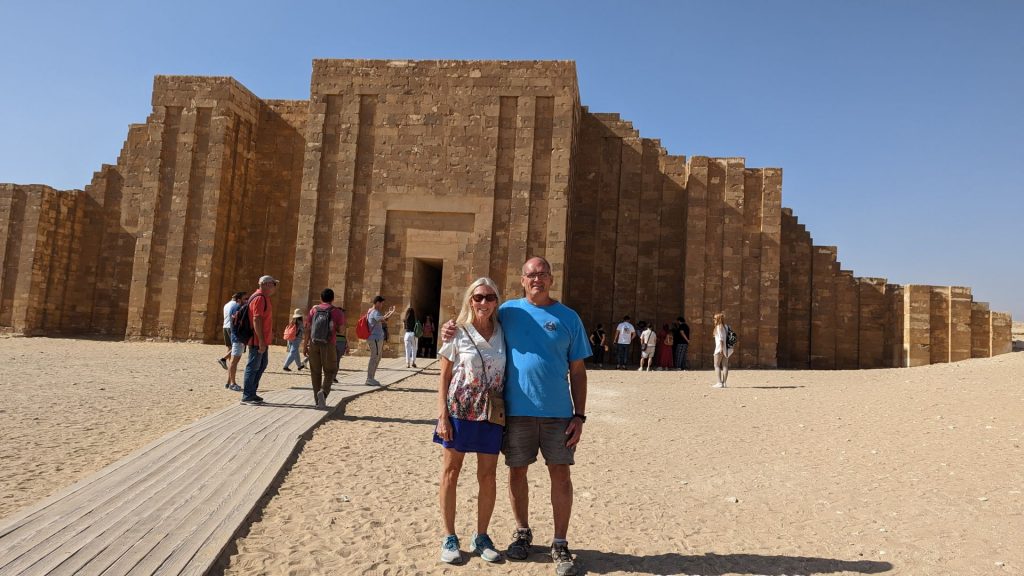
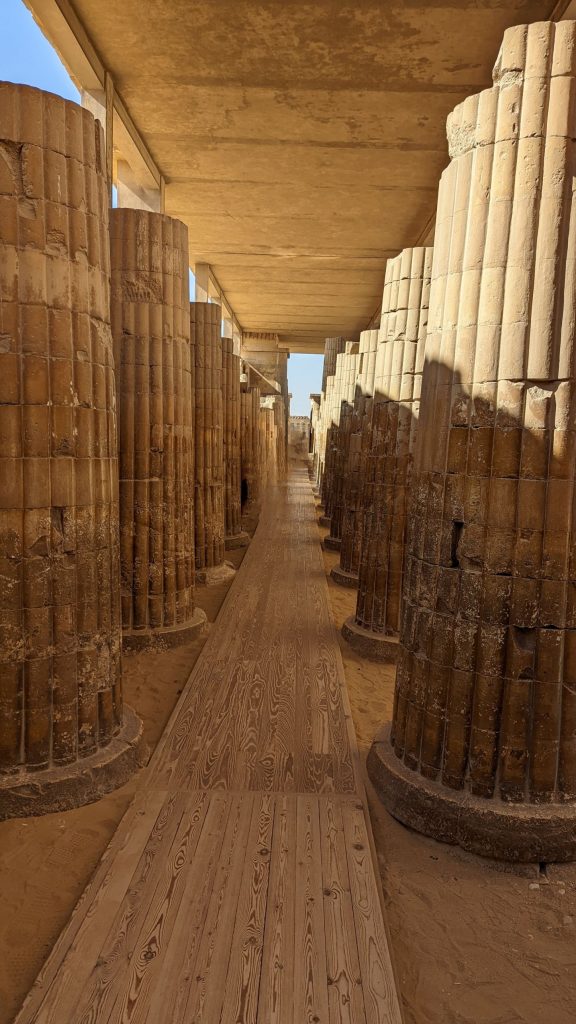
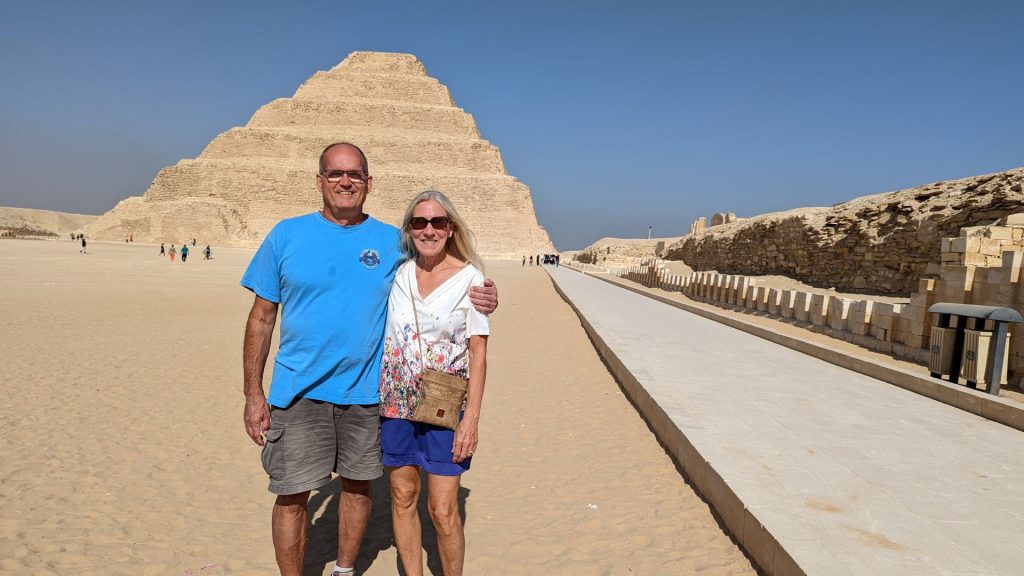
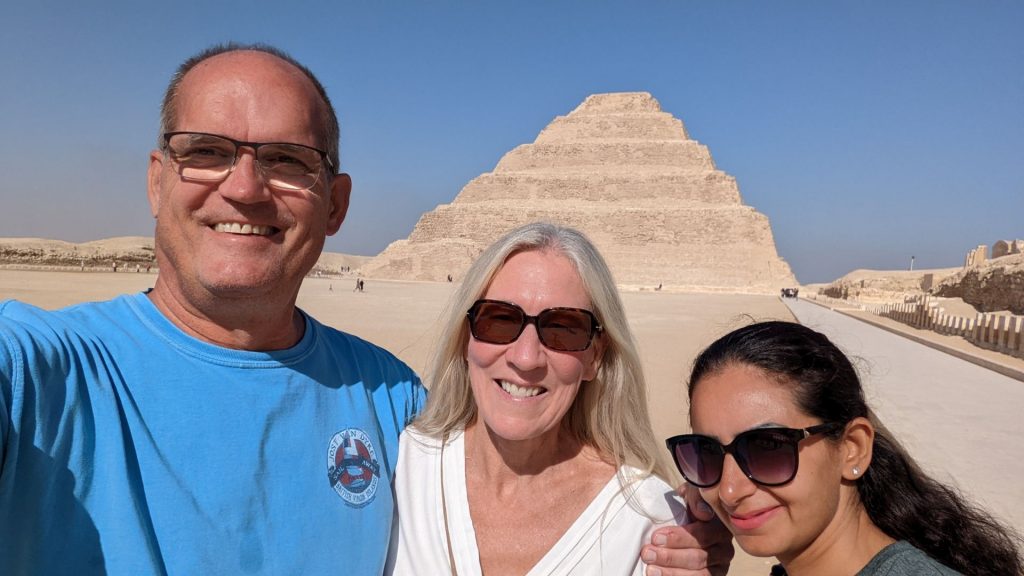
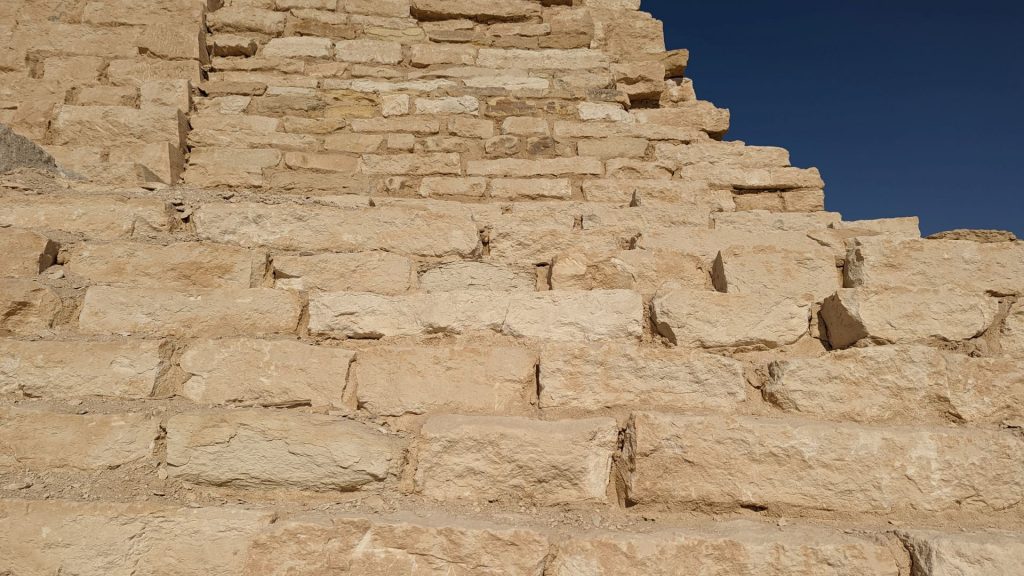
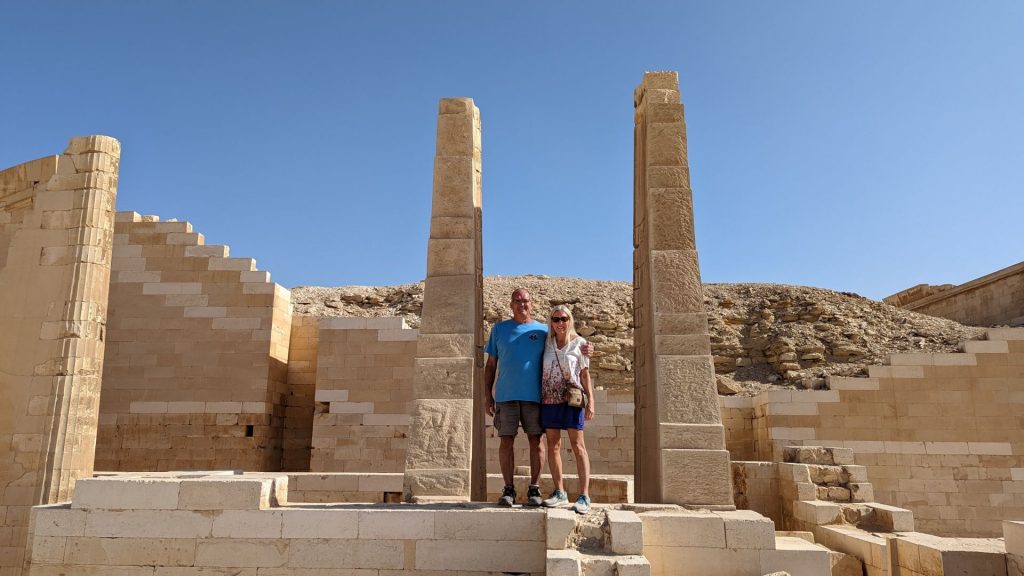
But there’s more! In addition to the Step Pyramid, we visited King Teti’s pyramid and tomb and the Tomb of Mehu.
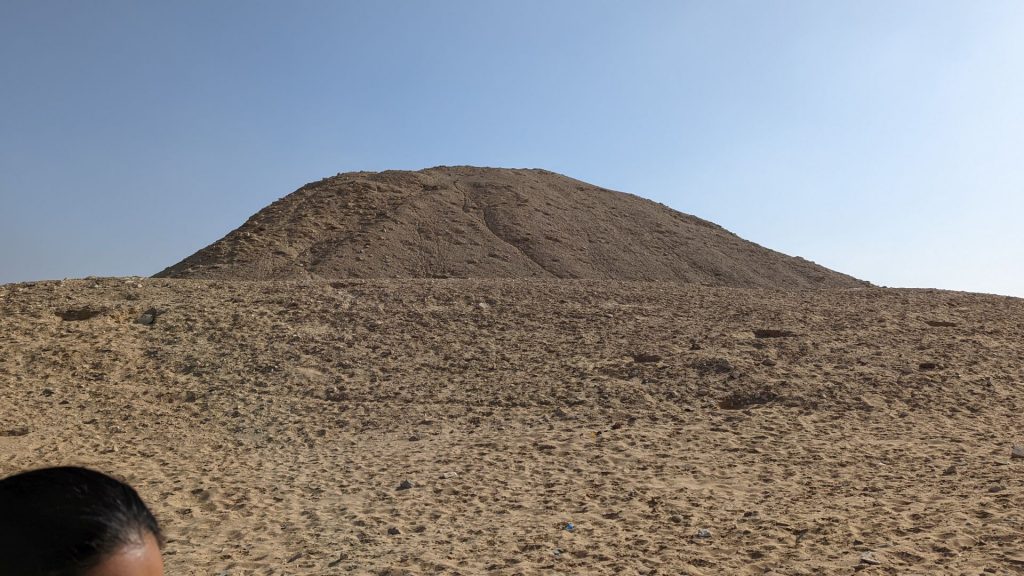
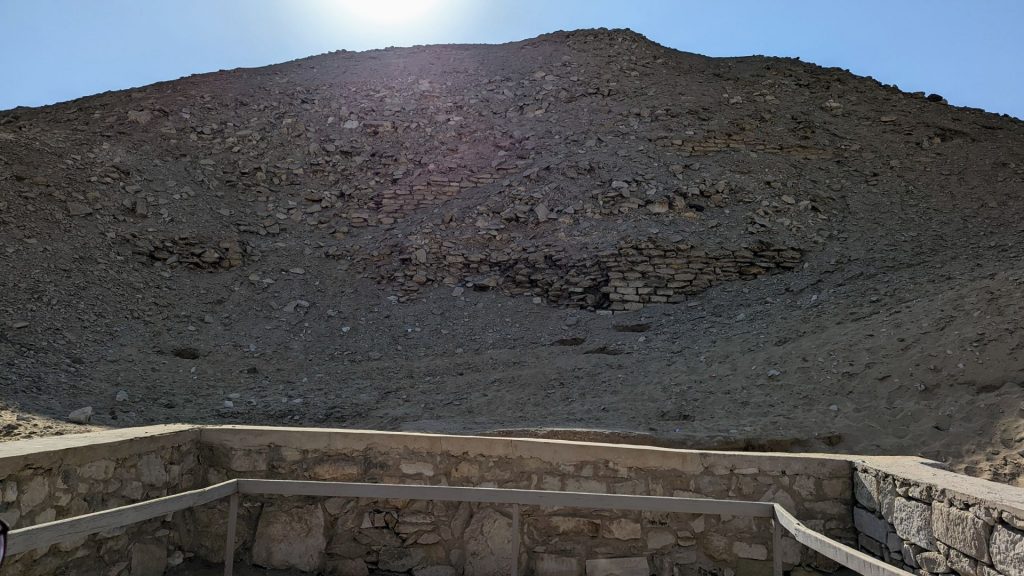
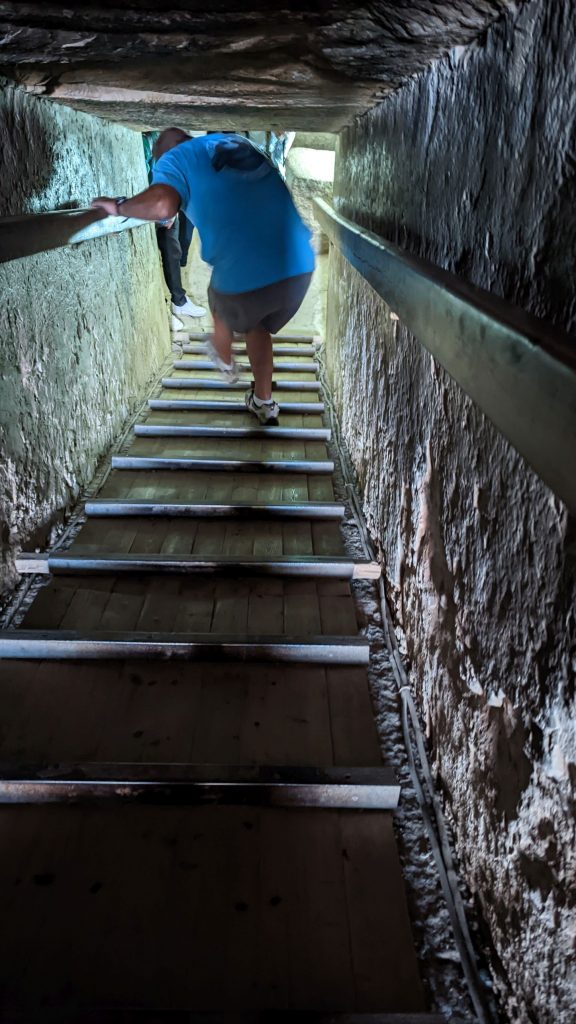
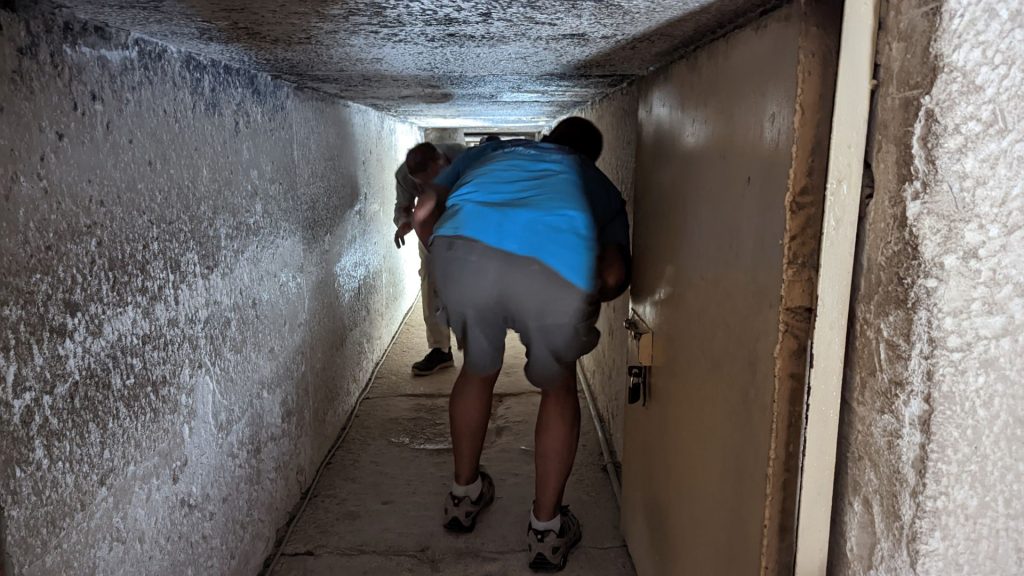
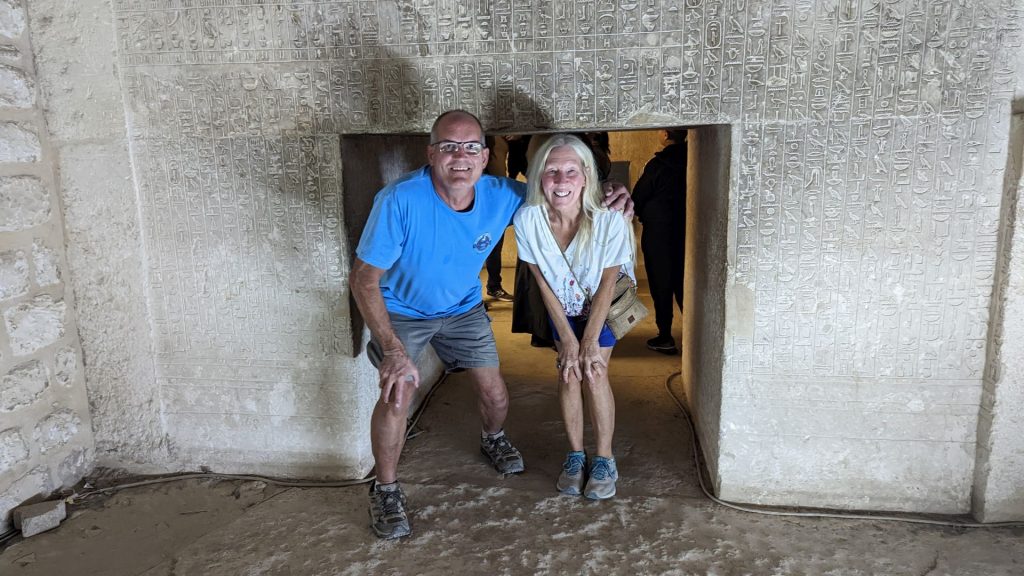
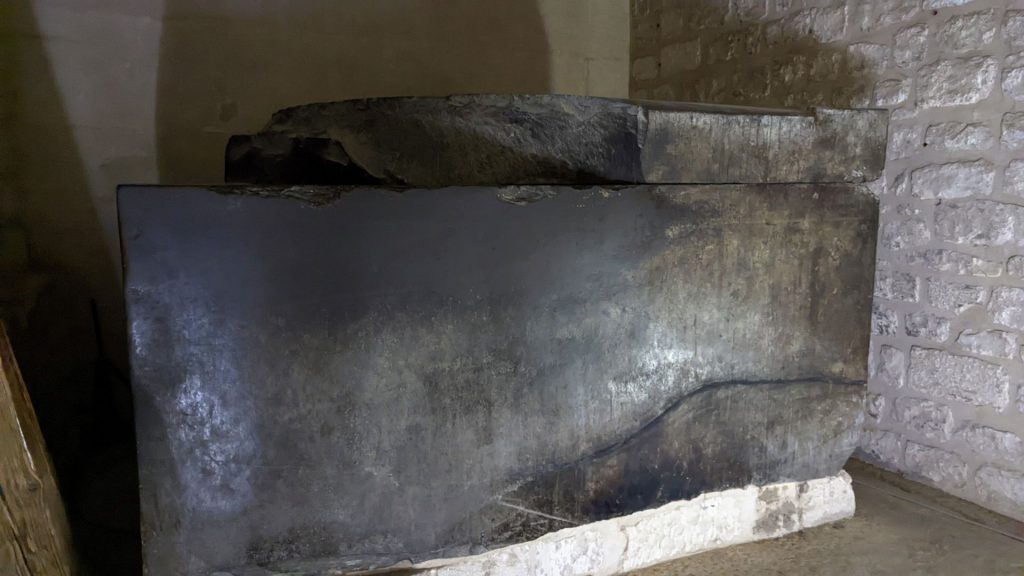
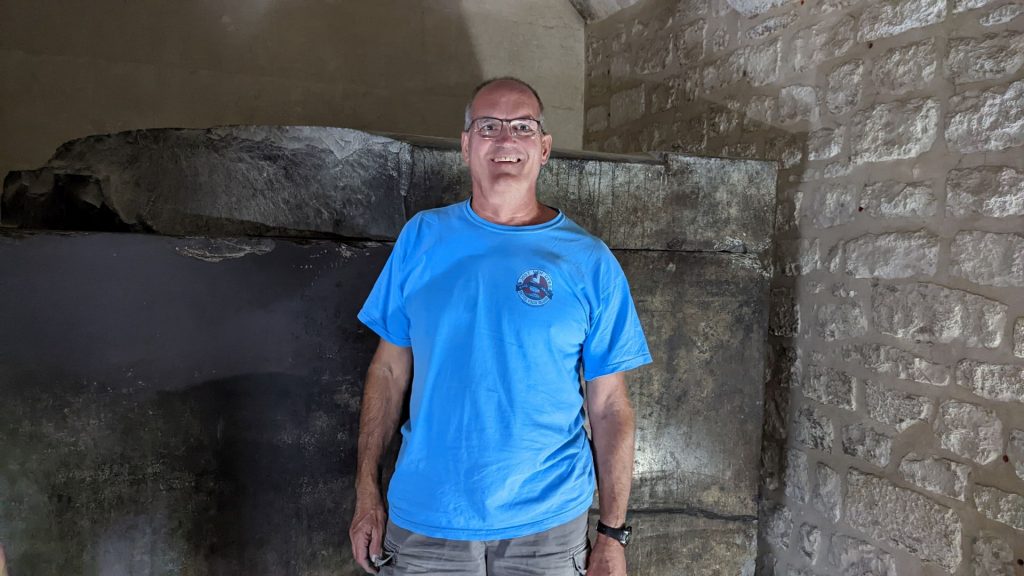
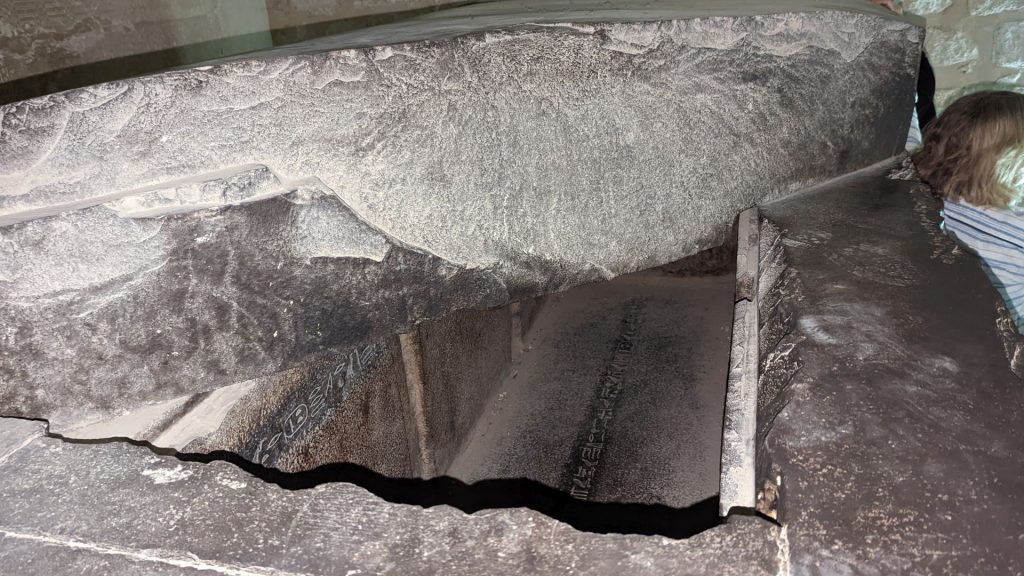
We spent quite a bit of time in the Tomb of Mehu. Mehu was the chief justice and vizier of King Teti, Sixth Dynasty. The office of the vizier was the most important one at the royal court. As we mentioned in a previous post, it was common practice for the king to include friends, family, and courtiers in the funerary complex; hence Mehu’s inclusion. I found his tomb to be of great interest because there are so many rooms and so much information on the walls. The walls are filled with scenes of daily life, including harvesting, fishing with nets, offerings, and gardening. It also contains scenes of baking, preparing birds for cooking, dancers, and harpists, and much more.
The tomb was found by Egyptologist Zaki Youssef Saad in 1940. (1940! I had assumed all of these things had been discovered long ago.) It just became open to the public in 2018. (I am glad we came when we did!) The tomb is 4,300 years old. You just have to sit with these dates a bit, right? My mind cannot comprehend.
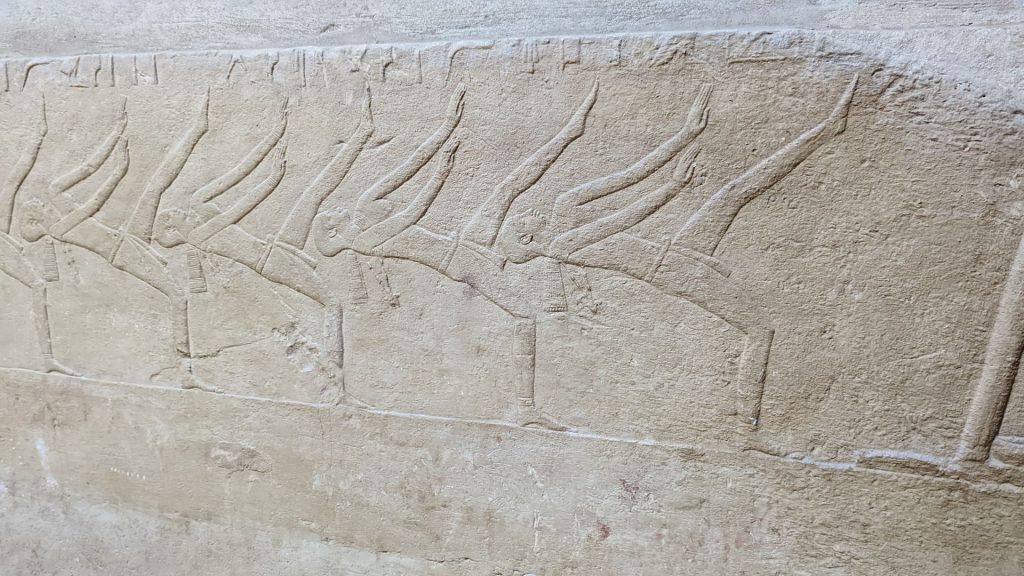
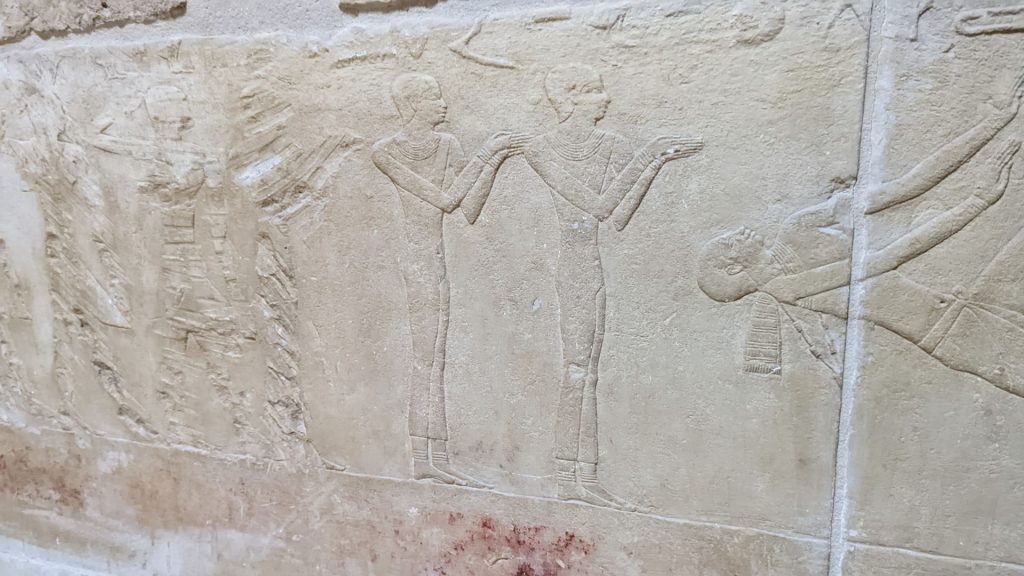
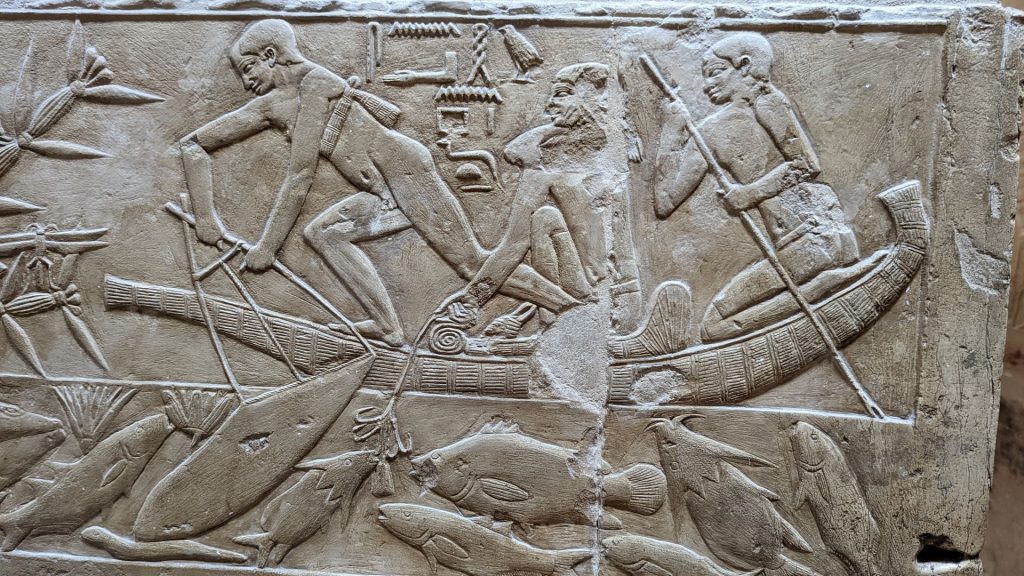
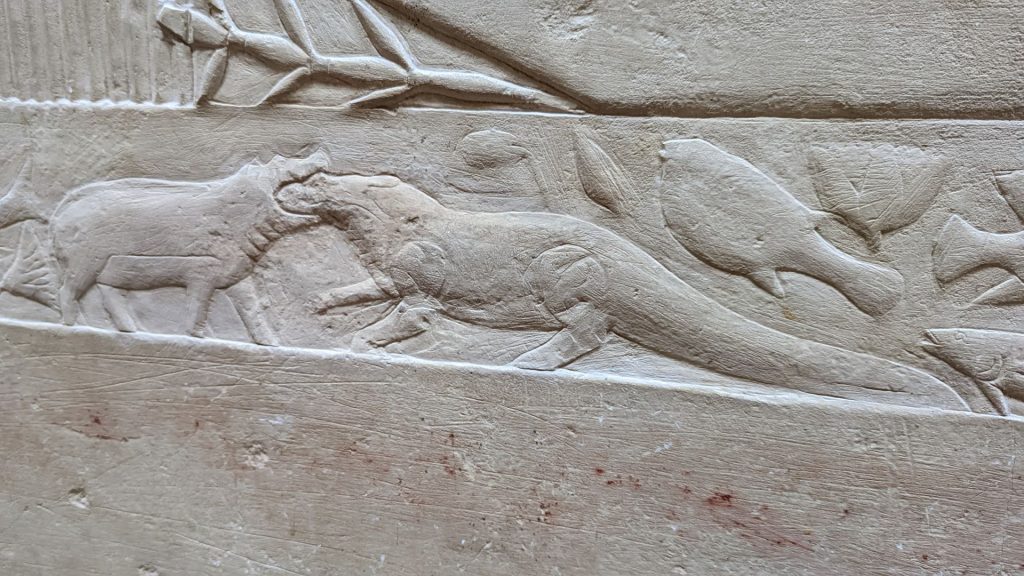
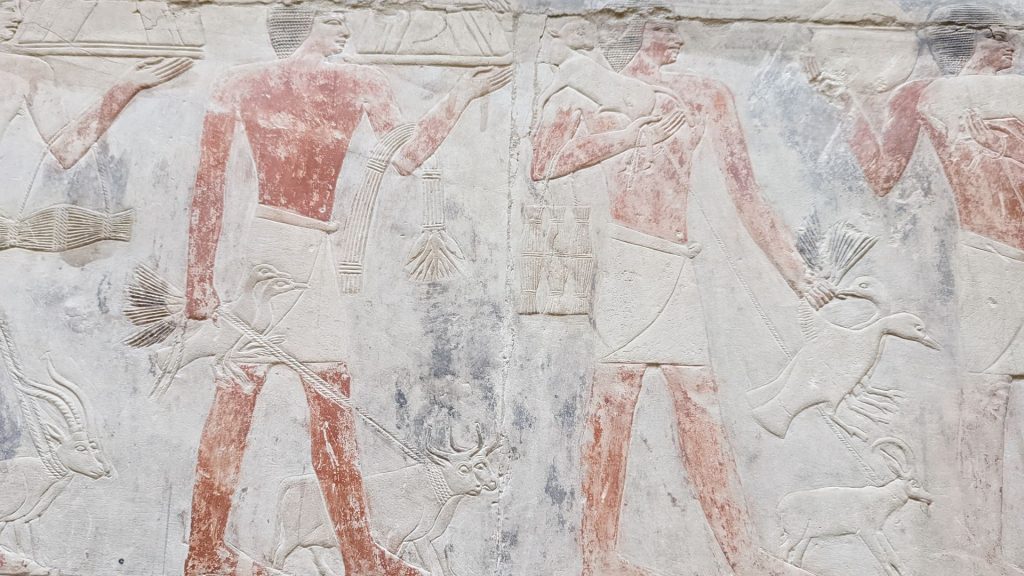
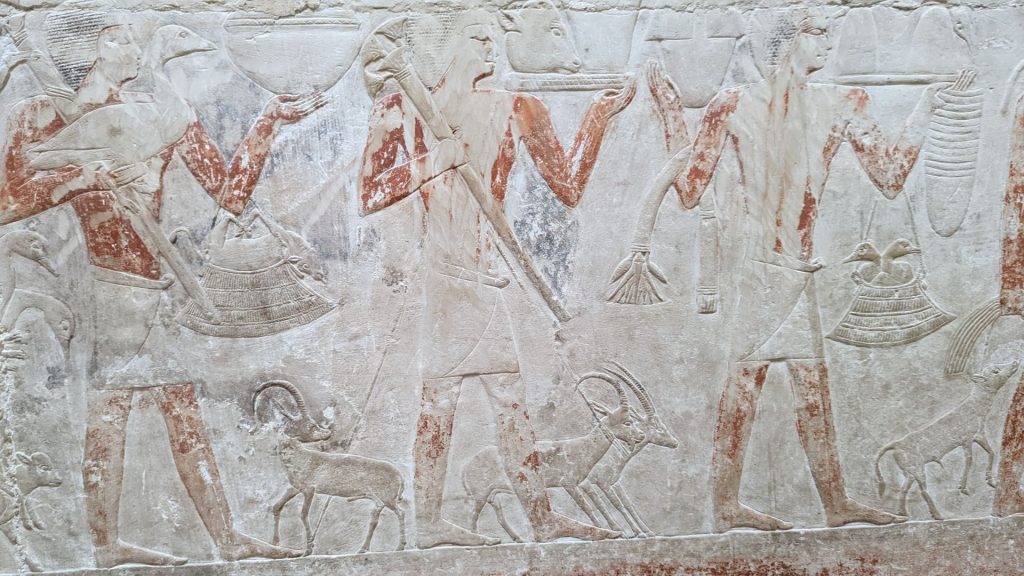
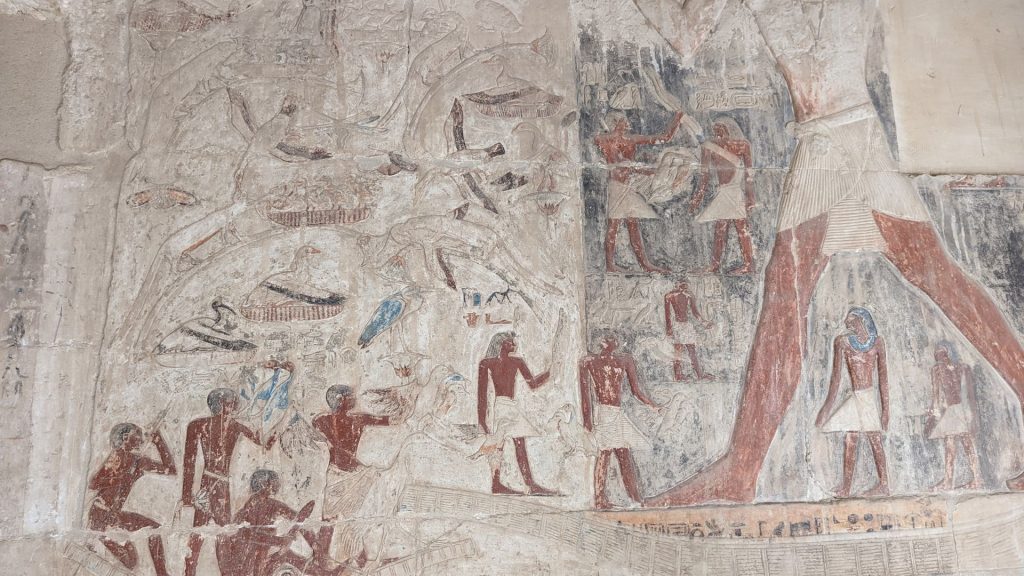
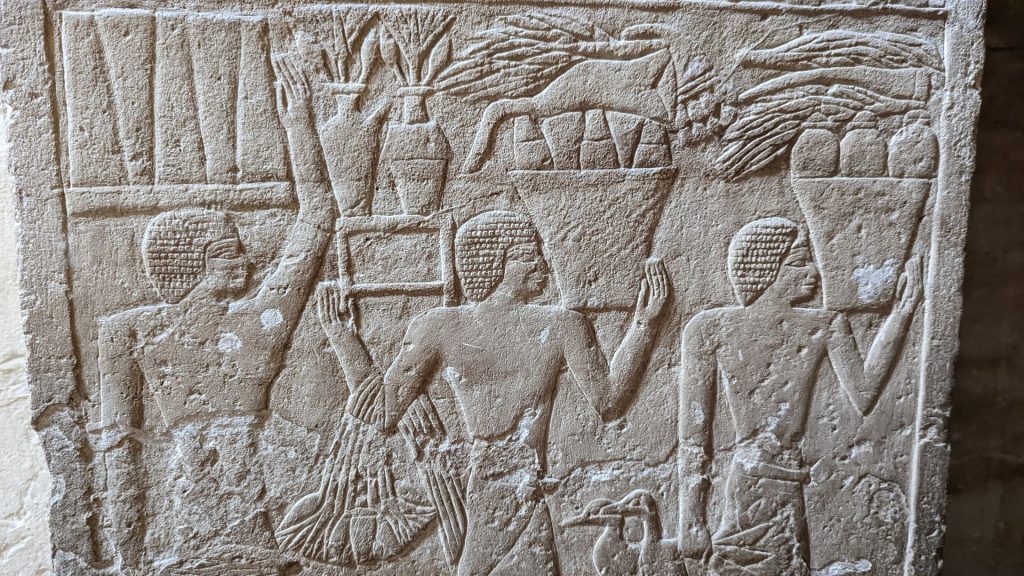
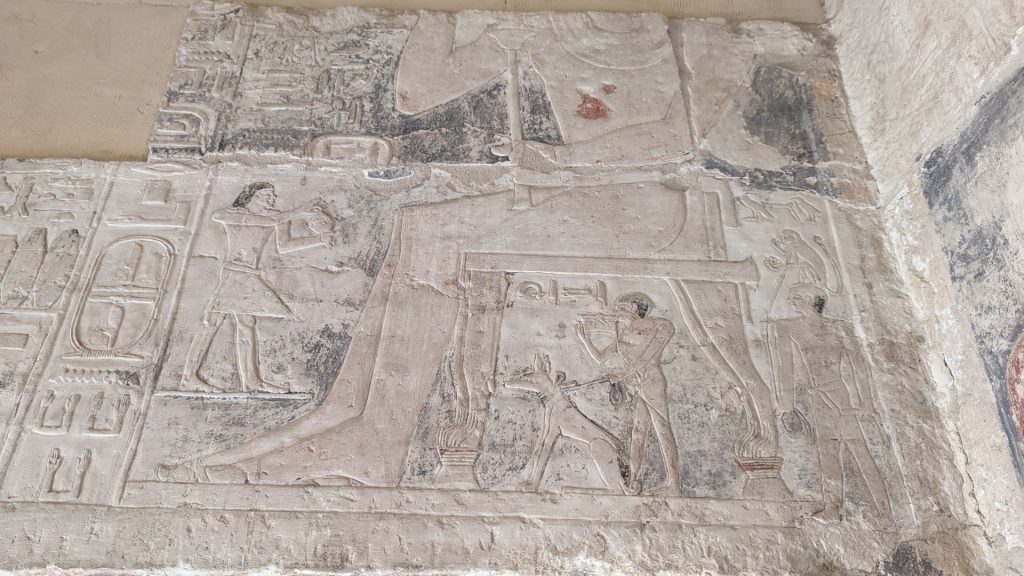
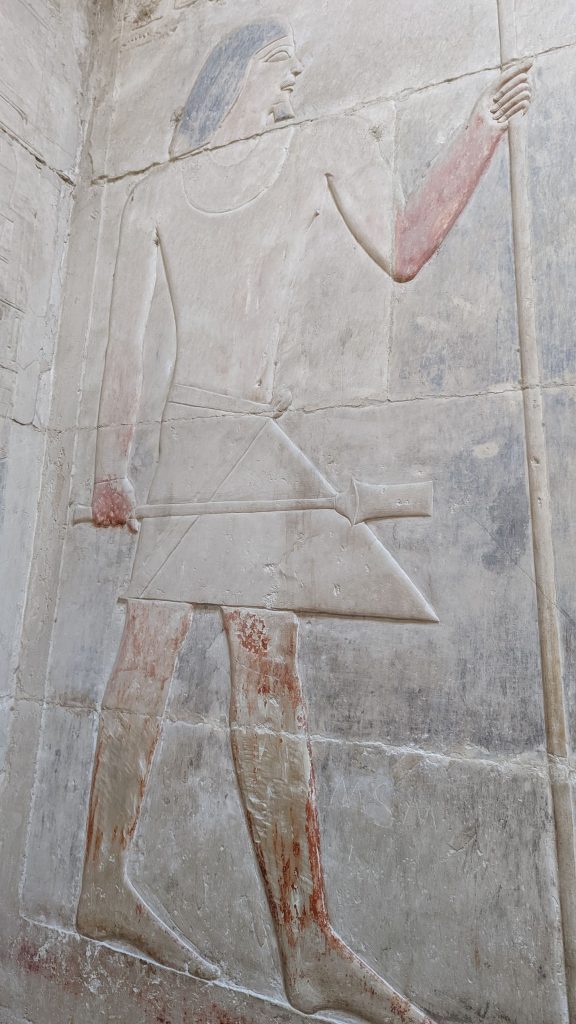
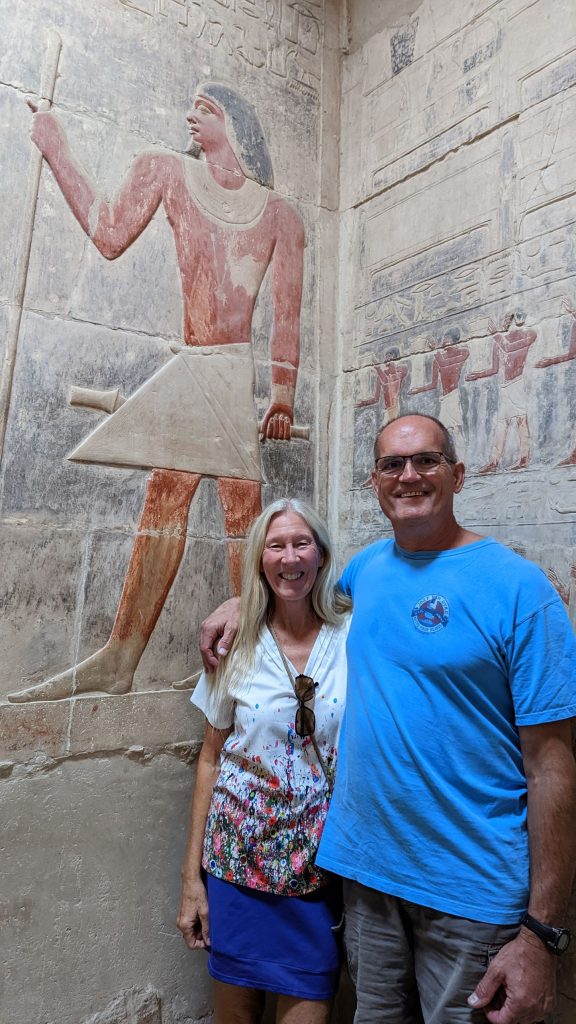
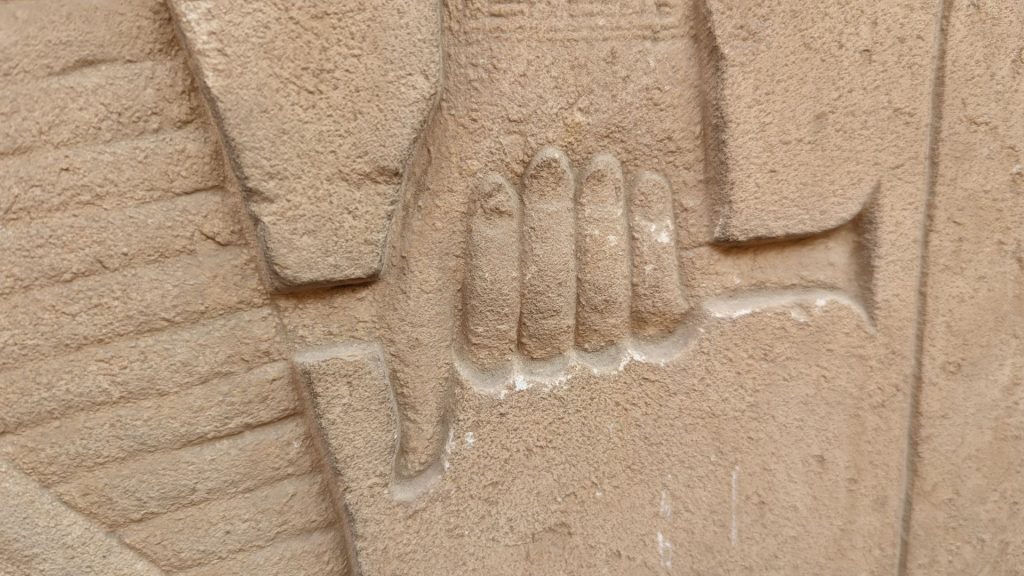
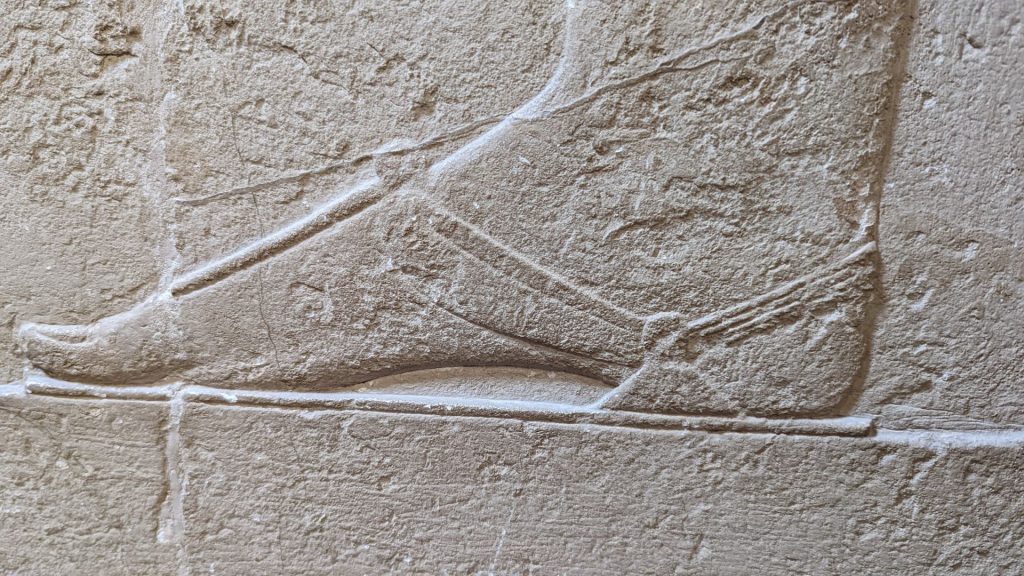
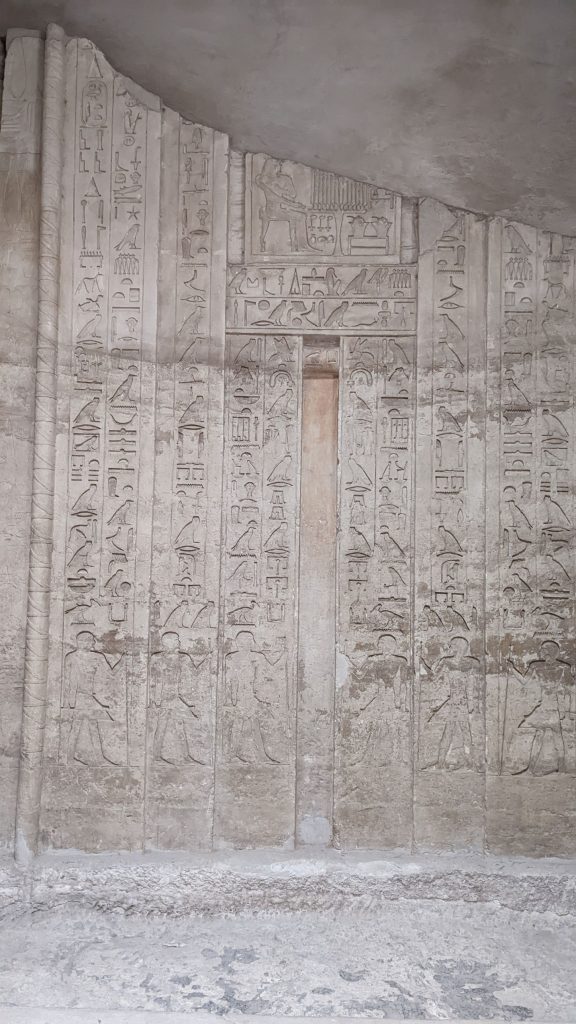
I have many more pictures, but I am guessing that you have seen enough of the Tomb of Mehu!
The final stop on our two-day tour was Memphis. There is not a lot to see because most everything from the ancient city was destroyed. There is an open air museum and one statue inside of a building.
Memphis was founded in 3200 BC by King Narmer (a.k.a. King Menes, according to a majority of Egyptologists). It was the first capital of Ancient Egypt in the era of the Old Kingdom (dynasties 3-6). Most of the pyramids found near Cairo were built during the period when Memphis was the most important city in Egypt and most probably the world. The god Ptah (god of craftsmen and architects) was worshiped during this period.
A word about Ptah: Ptah is uncreated, having existed before anyone or anything. He willed the world into existence with the power of his mind then used his speech to give life to his creation. There is a pillar in Memphis that bears an inscription describing him as: “the only unbegotten begetter in the heaven and on the earth. . . the god who made himself to be god, who exists by himself, the double being, the begetter of the first beginning.” Okay then!
The sphinx in Memphis is made from alabaster. It was discovered in 1912 by English archaeologist Petrie. Weighing in at 80 tons, it is the largest alabaster statue ever found. Although no inscription is visible on this statue, it possibly belonged to Queen Hatshepsut when she ruled as king.
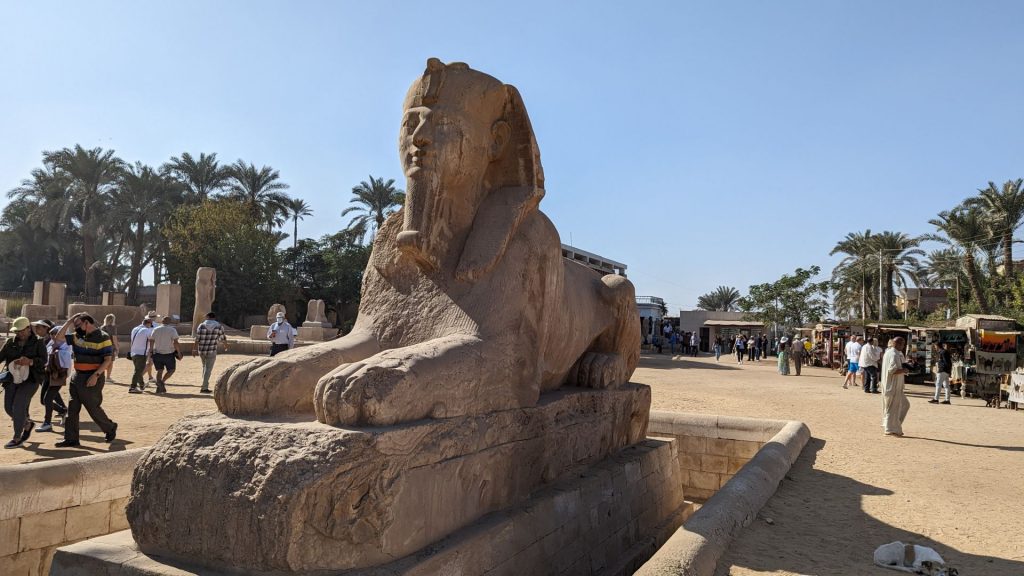
The other impressive statue is that of Ramses II. It was discovered by Giovanni Belzoni in 1820. It is made from limestone and is 12.8 meters tall with the royal cartouche bearing the name of Ramses. A structure has been built around the statue, which lies on its back.
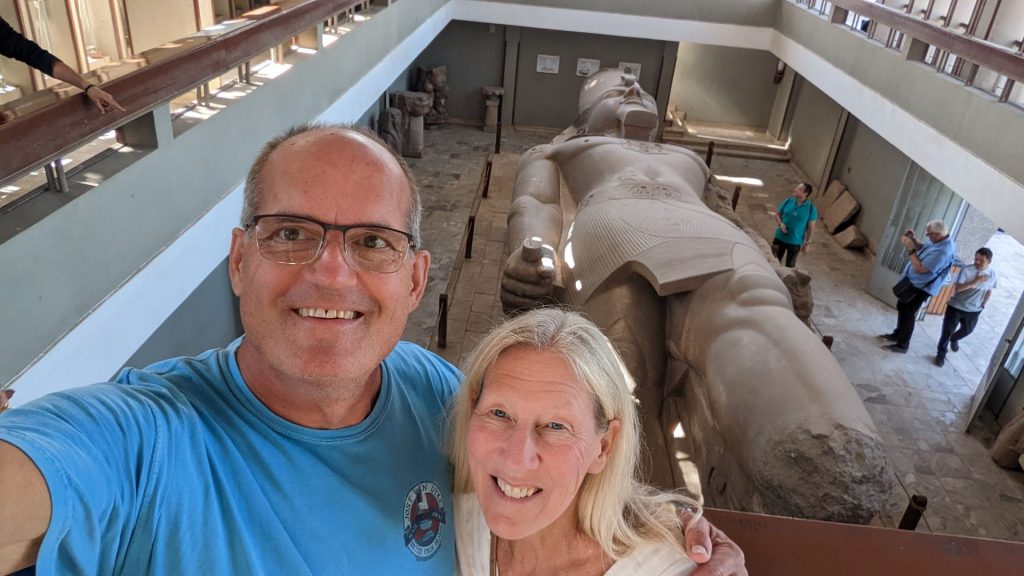
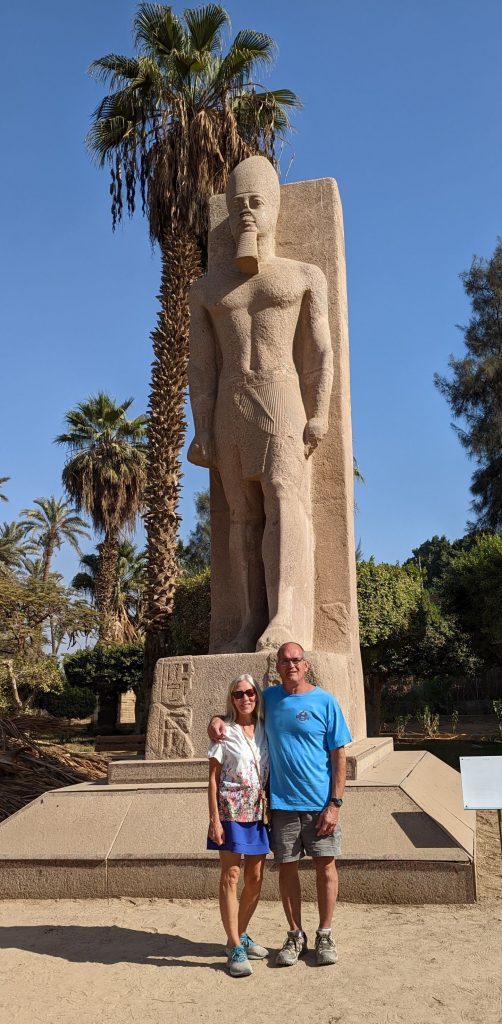
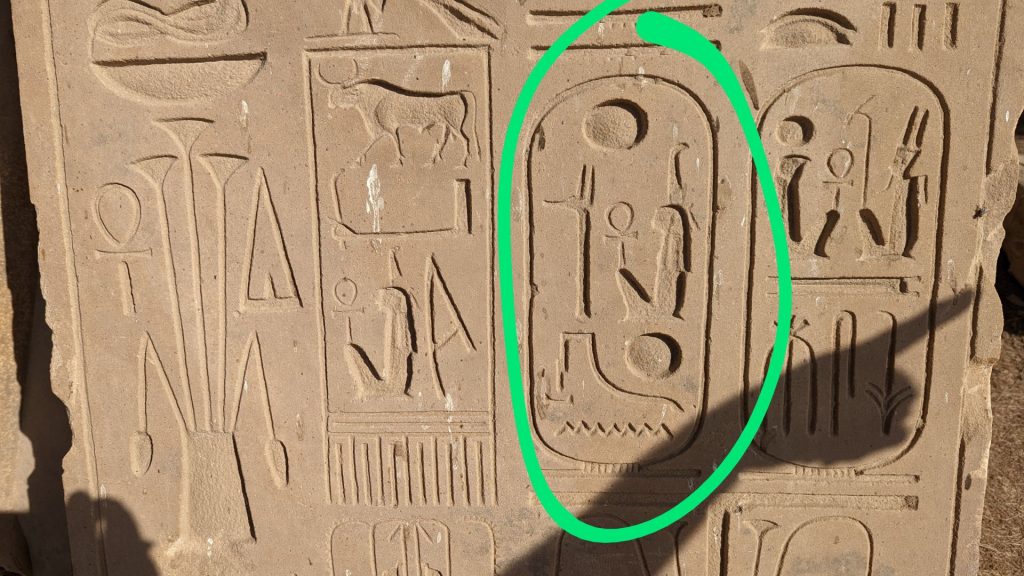
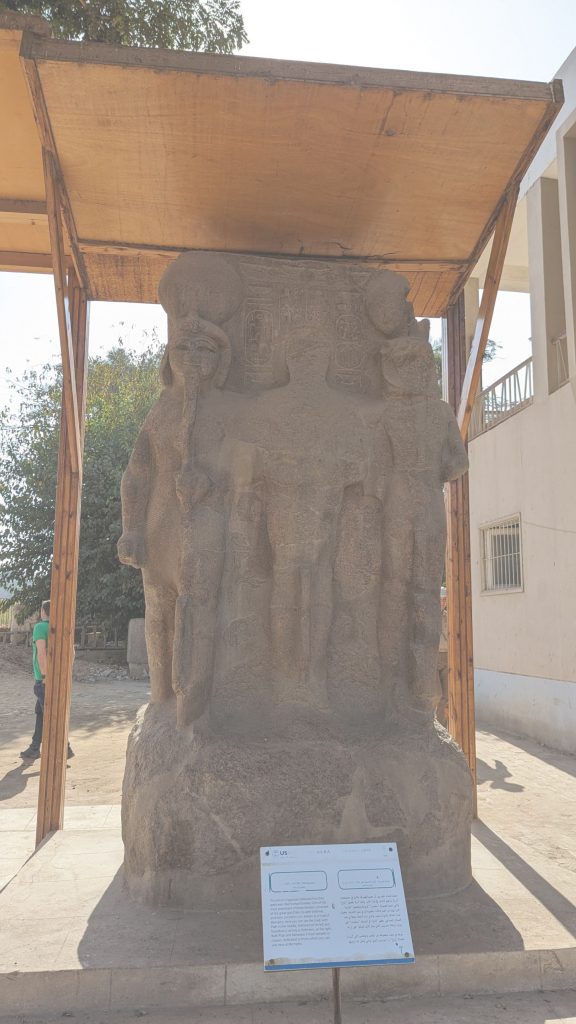
We headed back to Seahike after our perfect and wonderful two-day tour. Now we need to purchase books to learn more about ancient Egypt in general and these sites in particular.

Wow! What an incredible couple days for you two. The enormity of the structures and the detail is so amazing! Thanks for sharing!